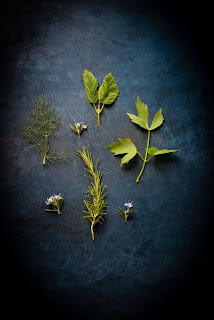Masterclass by Giovanni Manetti at Fontodi in Chianti Classico. Delightful. Insightful.
“A joy. A piece of my heart”.
Giovanni Manetti, who runs the family vineyard Fontodi (1968) in the heart of Chianti Classico, was answering the final question in Tuesday’s Liberty Wines online Masterclass. And, at this point, he wasn’t talking about his fabulous wines!
Someone, who had obviously visited the winery, had asked about the cows and Giovanni was delighted to talk about them: “Everyday it is my first stop… we had a new calf yesterday.”
How did a herd of cows end up at the bottom of one of the most famous vineyards in Chianti? “It was part of our tradition in the area. But, in the 70s, they disappeared, very quickly. But they remained in my mind and I brought them back in 2000.” He started with four and now has 65 “and growing!”.
 |
| Chianti Classico "hierarchy" |
Fontodi is an organic vineyard and the cows were welcome. “We feed them with our hay and barley and they give fertility to the soil. The beautiful meat goes to the village butcher and to my large family. The cows give mountains of manure and we mix it with waste from the vineyard and winery to make compost, amazing compost.”
“They improve our land fertility and the biodiversity, millions of micro-organisms, all good for the complexity and flavours of our wines. Bio-diversity doesn’t leave room for enemies. All part of the bio-dynamics, playing a part in the system.”
 |
| Fontodi's Super Tuscan |
Just before, he had answered a query on climate change in the area.
“Temperatures are getting higher every year. It rains less often but it is much heavier, dangerously so. Now everybody is growing grass between the rows as it can help avoid erosion and retain the water to help the wines. We also manage the canopy but different from the past when leaves were stripped off. Now we keep leaves to counter the extra heat. We are at work on climate change with two universities (Pisa and Florence) in the area.”
He was also asked about ageing in amphorae as against wood. The mention of amphorae was perhaps a surprise but not so much when you know that the family have been here since the 17th century when they set up a terracotta factory. Later, they made amphorae for wine and olives.
“It was in my background so we we started again producing the vessels in the factory. I’m very protective of it, just a few bottles in the cellar (not for sale) to taste and try all the time. Now using it for many different wines, Sauvignon Blanc and Trebbiano, and I like it very much, gives extra freshness. We have 50 and working on it.” And he told us there is a great demand for them from all over the world.
 Chianti set up an association in 1924, the oldest in Italy. But during the Mussolini years the larger area was created, “a big mistake”, and the confusion between the Chianti Classico and Chianti in general continues. “They’re two different areas,” Giovanni emphasised, different soil, micro-climate, and so. “I'm always trying to clear this up. Only Classico bottles are allowed the Black Rooster on the neck.”
Chianti set up an association in 1924, the oldest in Italy. But during the Mussolini years the larger area was created, “a big mistake”, and the confusion between the Chianti Classico and Chianti in general continues. “They’re two different areas,” Giovanni emphasised, different soil, micro-climate, and so. “I'm always trying to clear this up. Only Classico bottles are allowed the Black Rooster on the neck.”
There is a commitment to quality among the 515 estates who produce about 36,000,000 bottles per annum. Of these, 354 are bottlers and that number “is growing every year, very encouraging. Producers are trying their best to improve quality and low yields are one sign. It is a good unique wine with a sense of place, an identity that cannot be replicated.”
There is also a commitment to sustainability and already some 40% are organic or biodynamic and that percentage is growing every year. “If you respect Mother Nature, less interference is needed, I’m very excited about this!”
He is also proud that the main red grape here is Sangiovese, that it has seen off the challenge of the international grapes. “By rule, Chianti Classico must contain 80% Sangiovese but the trend is towards increasing that percentage, a very positive trend as it gives more sense of place. It is a very delicate grape but suits the terroir and it expresses it well.”
“Sangiovese has always been the biggest player but other indigenous grapes could be a good companion, better than the international varieties.”
He indicated that the others indigenous grapes (see chart) might “add extra freshness, a bit of complexity”. “It is necessary to do research into them as well as new clones of Sangiovese to face the problem of global warming. We are at work to face this problem.”
Always problems to be worked on it seems. So why not take time out to see how the cows are doing of a morning, “My beloved cows, at the bottom of the vineyard.”
* Giovanni Manetti has run the Fontodi property since 1980. The estate’s 90 hectares of vineyard are situated in the prime 'conca d'oro' (golden shell) of Panzano, a south-facing natural amphitheatre which allows the grapes to ripen fully. The altitude ensures cool nights, which in turn results in the retention of good acidity and lovely aromatics.
Giovanni was elected president of the Consorzio Chianti Classico in 2018, a prestigious role that recognises his contribution to the winemaking of Chianti Classico. As president of the Consorzio he is working on identifying, recognising and highlighting the different expression of the various “comuni” that make up the Chianti Classico denomination.
Previous masterclasses in this current series:








































